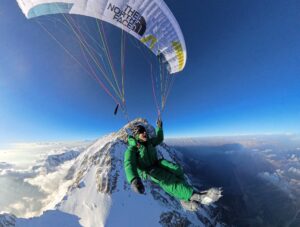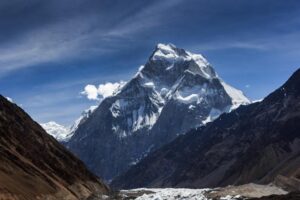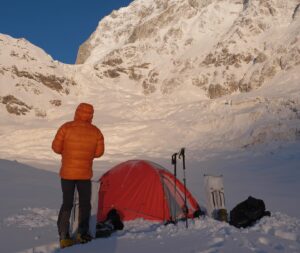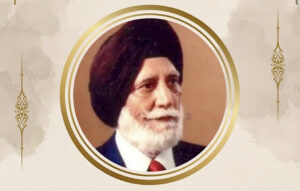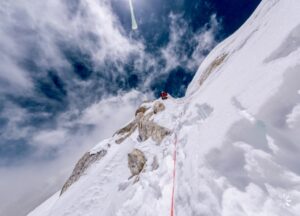One of the “remaining problems” of Himalayan climbing was solved on Oct. 12. Three Americans reached the 7,710m summit of Jannu after climbing its sheer north face.
The team was not the first to climb the massive 2,700m face. But Alan Rousseau, Matt Cornell, and Jackson Marvell made it in pure alpine style and in a single push. They took six days from base camp to summit, and one more for the descent.
The face is known as the “Wall of Shadows” because most of it does not receive any sun.
Jannu (also known as Kumbhakarna) lies in eastern Nepal, near Kangchenjunga. A team led by Lionel Terray first climbed the mountain in 1962. The north face had seen two previous ascents, by a Japanese team in 1976 and by a Russian group in 2004.
The latter expedition, led by Alexander Odintsov, put Alexandre Ruchkin and Dmitry Pavlenko on the summit and gained the team a Piolet d’Or. But the powerful, 12-strong Russian team climbed capsule style and fixed ropes at several points.

Jannu’s north face. Photo: Shutterstock
Style is key
It was Marvell, Rousseau, and Cornell’s third visit to the mighty face, after previous attempts in 2021 (by Marvell and Rousseau) and 2022 (by Cornell and Rousseau). They followed a line that included parts of the Russian Direct route and parts that were completely new (on the upper section of the climb). The team estimates that the 2,700m route is M7 AI5+ A0.
How is it even possible to climb such a difficult, huge route in alpine style? There were no partial trips, previously set-up camps, gear caches, or fixed ropes.
To achieve this, the Americans reduced their gear to the minimum and increased their speed to the max, using some bold, ingenious techniques. According to some climbers consulted by ExplorersWeb, these techniques could change the game for future cutting-edge expeditions.
Only one rope
The three-man team only took along one 9mm rope, 60m long, instead of the usual double set. This would have caused serious trouble if they had damaged the rope during the climb. To progress with only one rope, they applied a fix-and-follow system.
“The leader climbs up and short-fixes the line. Then the other two follow using a micro traxion pulley, while the leader hauls the packs,” they explained in an interview with PlanetMountain. Needless to say, they carried no bolts.
The team’s inflatable, ultralight portaledges proved a great asset. They only took two pads for the three of them, to use in the climb’s six bivouacs. Three of these were free-hanging.
The climb
On Oct. 7, the team set off from their 5,475m base camp. The first two days were relatively simple. The real climb began on day three when they properly emerged onto the wall, their sponsor, Coros, explained in a report.
“Our hardest, steepest climbing was from 7,000m to 7,500m,” Rousseau wrote on social media. “This recessed portion of the north face has not been climbed previously. This is where we experienced some of the most intensely wonderful mixed climbing.”
Rousseau summarized the climb for PlanetMountain:
The climb begins with a 1,000m moderate rock buttress that frees at 5.8. Then you move into a huge icefall before popping out on a glacial plateau. We camped in the bergschrund at 5,800m. On day two, you cover a huge neve ramp from 60-90°. That second night, we camped in a huge glacial cave at around 6,700m.
On day three, the terrain becomes harder and the altitude begins to catch up with you. We moved through lots of M5 AI4 sort of terrain to about 7,100m, where you emerge properly established on the headwall.
Days four and five were spent climbing mostly sustained M6-7AI5 terrain, with the hanging bivvies each night. On day six, we wrapped around to the southwest side of the mountain and finished the climb with some surprisingly challenging climbing. The technical climbing only ceased about 100m below the summit.
Route name
The Americans called their route “Round Trip Ticket” as a retort to Russian climber Sergey Kofanov. Kofanov climbed Jannu’s west pillar, also in alpine style, with Valery Babanov, in 2007.
“Perhaps someday, a pair will climb a direct route on the north face in alpine style,” Kofanov told Alpinist in 2017. “But they’ll need to accept the likelihood that they’re buying themselves a one-way ticket.”
Piolet d’Or?
ExplorersWeb reported news of their climb right after the team’s outfitter in Nepal, Grand Himalaya Treks and Expeditions, shared the good news on social media. They also told us that a helicopter had airlifted two of the climbers to the hospital with frostbite.
After some initial secrecy, the climbers confirmed the injuries, although they downplayed the seriousness of them. They told the AAJ’s Ed Douglas in a podcast interview that they asked for evacuation to prevent infection and to get fast access to treatment.
It will be interesting to see if next year’s Piolet d’Or jury applies the same criteria to them that they imposed on the Ukrainian team which solved another classic alpine problem: Annapurna III’s southeast ridge. The three Ukrainians, Viacheslav Polezhaiko, Nikita Balabanov, and Mikhail Fomin, took a helicopter to the base of the wall, as the surrounding glacier was impossible to cross on foot because of landslides. The team was not awarded a golden ice axe because of their helicopter use.

